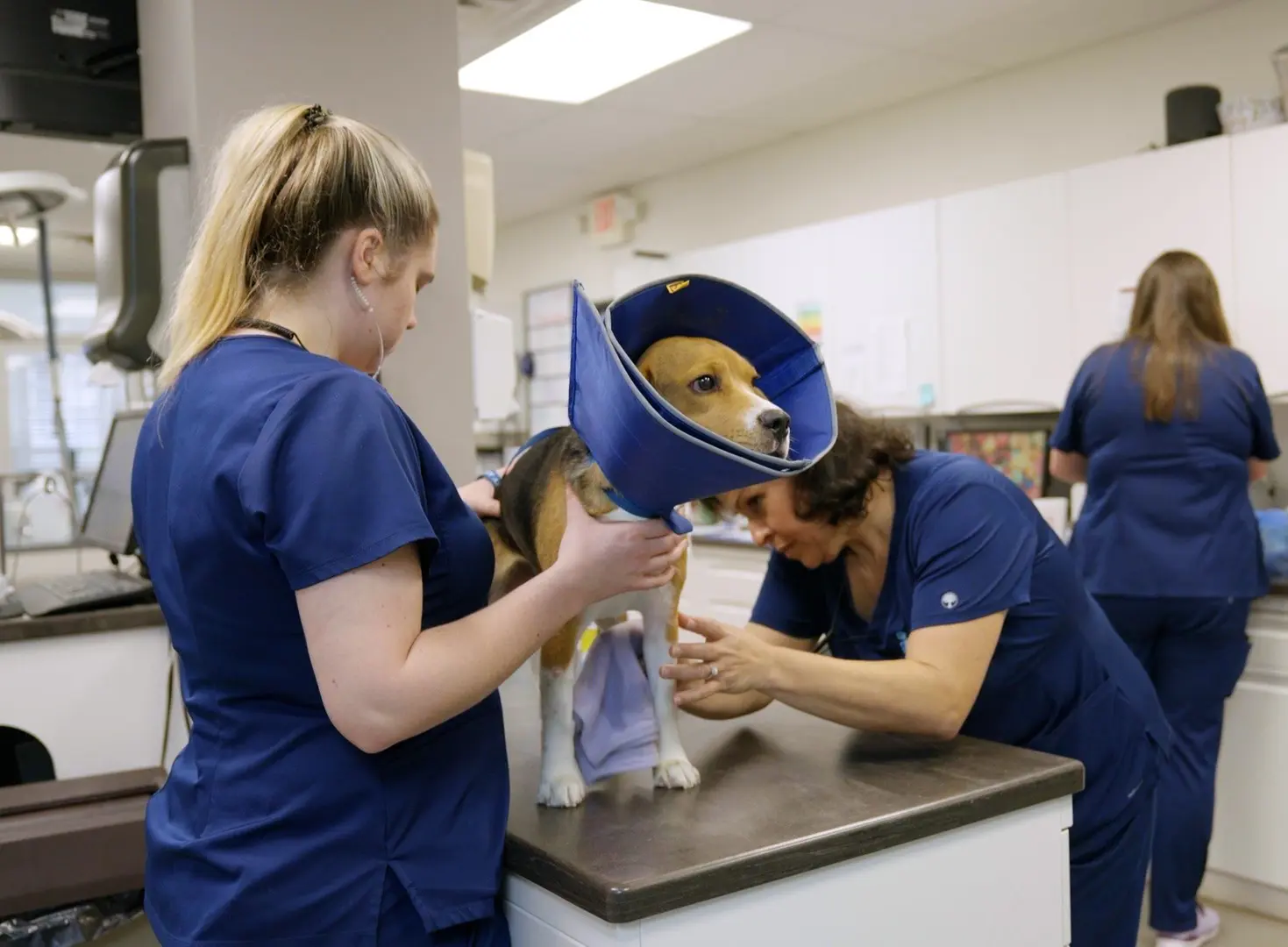Hi there! Me again. I am excited to dive into this second post of Getting Geospatial with Charlotte, and one I am particularly excited about: understanding your market area and the people who make it thrive – your clients! Independent veterinary practices deserve every opportunity to succeed, and one truth I come back to often is this: your doors stay open because of your clients. And your clients? They primarily come from your market area. That is why it’s so important to ground your strategic decisions in a clear understanding of your local market and the people within it. Doing so helps ensure profitability, sustainability, and the ability to carry on your legacy as a practice owner.
In this first post, we will focus on getting to know your clients – who they are, what matters to them, and how you can better meet their needs.
So, what does it really mean to understand your clients and your market area? Let’s start with the clients themselves. Most practices serve a mix of current clients (those who visit regularly, whether several times a year or just for their annual checkups), lapsed clients (those who haven’t been in for a while and may need encouragement to return), and potential clients (those who haven’t come through your doors yet). These potential clients may be going elsewhere, may not fully understand the value of veterinary care, or may not even know your practice exists.
But knowing who these clients are goes beyond their visit history. Do you know their preferences, how they like to communicate, or how they might respond to changes in pricing? What technologies do they use and expect from you? Can you describe their demographics or lifestyle patterns? Understanding these kinds of details can help you tailor your services and communication in ways that better meet their needs and support sustainable practice growth.
In Part 2, we’ll explore how your local market area, and the people moving into it, can shape your future strategy.
Client Segmentation
Client segmentation is the first step to truly understanding your clients by grouping them with similar characteristics to better identify their needs and preferences. Clients can be segmented by demographics like age, geography, income, or spending habits. You can also group them by practice behavior: what services they use, how much they typically spend, how often they visit, how long they’ve stayed with your practice, and their overall loyalty (a mix of spending and tenure).
This information can help you identify new product and service opportunities, enhance the client experience, strengthen loyalty, and deliver your current services more effectively. By understanding who your clients are, what they want, and how they behave, you can make smarter decisions to boost both client satisfaction and profitability.
Many client segmentation insights can be pulled directly from your practice management software. Tools like Pulse, Cornerstone, ezyVet, or Avimark allow you to filter clients by visit frequency, average spend, service history, and more.
Understanding Lapsed Clients
Now what about those clients who haven’t been in for years? It’s just as important to understand their past visit habits and demographics, even if only to figure out who may be worth re-engaging.
Hint: It isn’t me. I moved, changed states, changed pets, changed everything. Not all lapsed clients are worth chasing.
Please remember to keep your client database updated. I still get emails from practices I visited once, years ago… in a completely different state. I’m not a lapsed client, I’m just not your client anymore. I promise, it’s not you. It’s geography.
Understanding who your true lapsed clients are, who aren’t just anyone that hasn’t shown up recently, can help you focus your outreach where it actually counts. Clean data leads to smarter segmentation and more targeted engagement.
Many practice management systems allow you to filter by last visit date, making it easy to identify lapsed clients who haven’t been in for 12, 18, or 24 months. That’s a great starting point for understanding who might be worth re-engaging and who’s simply moved on.
Just remember: if they moved across the country and don’t even own a pet anymore… it’s probably not worth the postcard. I promise, it’s still not me!
Listening Through Surveys and Feedback
Client surveys and feedback help fill the gaps that segmentation data alone can’t reach. While segmentation shows you the what — who your clients are and how they behave — surveys give you insight into the why. They let you hear directly from clients about their frustrations, concerns, needs, preferences, and even what excites them. This is your chance to move beyond assumptions and actually understand what your clients are thinking.
Observing client behavior is helpful. Knowing what they are thinking is even more powerful. Surveys can confirm what you already suspect based on segmentation and often reveal new opportunities to improve services, communication, or overall experience.
So how do you go about collecting this feedback?
Online reviews are a good place to start. Think about how often you have read restaurant reviews where the complaint is not about the food. Instead, it might be about a rude staff member, inconsistent service, or pricing. Veterinary practices are no different. If reviews mention a frustrating front desk experience or high fees, that may be a signal worth exploring. It could suggest a need for staff training, better communication, or more transparent payment options.
You can also ask clients directly. A simple follow-up question at the end of the appointment, such as “How was your visit today?” can go a long way. Even better, consider using tools that make collecting and managing feedback easier.
PetDesk includes tools that help practices gather and organize client feedback, such as online reviews and surveys. It is a simple but powerful way to stay connected to how clients are experiencing your practice and to spot areas for improvement.
Geography Matters: Know Where Your Clients Are
You might be surprised by what you find if you mapped out your clients or cross-checked their ZIP codes on a map. Eighty to ninety percent of clients typically come from a concentrated area, usually within five to ten miles of the practice, depending on the location. In urban and suburban areas, that radius may be even smaller. In rural settings, clients often travel farther, but even then, most still come from a relatively defined area. But it is not always as straightforward as a circle around your clinic—geography can be shaped by things you cannot control, like traffic patterns, highways, rivers, or even school district boundaries.
Understanding where your clients reside is more than a fun exercise. It’s a strategic advantage. If most of your clients are concentrated in one direction, that tells you something about access. If a neighboring area is underrepresented, that might signal an opportunity (or a barrier you need to understand).
Geographic patterns influence everything from appointment timing to the likelihood of clients returning for follow-up care. Knowing where your clients are helps you tailor your messaging, adjust your hours, and even decide where to focus community outreach or client education efforts.
It can also help you shape your marketing strategy. For example, if your core clients come from a specific ZIP code or neighborhood, that may be the best area to target with digital ads, postcards, or community events. On the flip side, if you are trying to grow your reach, looking at nearby areas that aren’t well represented can highlight new opportunities for outreach or partnerships.
VMG members can take advantage of custom demographic reports to better understand their client base and surrounding community, including segmentation opportunities. These reports include insights into the people and pets near your practice such as age, household income, and pet ownership, giving you the tools to align services, hours, and outreach with local needs.
Wrapping It Up
I think that is enough for this post! I could go on and on. But remember, understanding your clients is not a one and done task. It is ongoing. People’s preferences shift. Their lifestyles change. Even their ZIP codes change. Do not be that person who assumes the client base looks the same as it did five years ago.
From client segmentation to surveys and feedback to geographic insights, each element gives you a sharper picture of who you serve and how to serve them better.
Coming in Part 2: Understanding Your Market Area — how to go beyond your current clients and analyze the full potential of your local geography.






